In a time of deep planetary change, how do we begin to recover from the trauma of climate change?
I
In bare skin, tingling in the 8C (46F) water, Craig Foster swims into the waters off the Western Cape of South Africa and immerses himself in the Atlantic Ocean. In many ways, he is a broken man. Depleted and disconnected, he slowly dives into the all-powerful and unfriendly waters, and finds shelter in the tranquil kelp forest below – an area which he has not connected with since his childhood. As he glides through the undisturbed kelp landscape, he is overwhelmed with his smallness in this almost alien landscape. He is alone, but not for long.
Meandering through the tangled kelp terrain equipped with curiosity and a camera, Foster takes us through his moving story of healing in the hit Netflix documentary My Octopus Teacher. Soon, he has his first sighting of a strange spectacle: a moving conglobulation of shells. Then, suddenly, an octopus emerges and retreats into the kelp. This is Foster's first encounter of the octopus that serendipitously teaches him, over the next few months, about purposeful and deep connection. As he dives deeper into this unlikely relationship, Foster immerses himself in the natural world, getting to know the subtleties of the wild and his place in it, which eventually sets him free. This is healing.
As humans, we face diverse experiences and pressures that require healing. And as a new epoch is unfolding – the Anthropocene – deep planetary changes and environmental destruction are necessitating healing at individual, community and global scales. Feelings of pain, suffering, fear, anger and grief for those directly affected by climate change or those watching through TV screens are real. From the Inuit in Canada to Australian farmers and island nations, ecological grief and anxiety have been recorded across the world.
As Caroline Hickman argues, these are all appropriate reactions, but defences against these feelings – such as denial, disavowal and paralysis – means we don't make the changes that both us and our planet need. We constantly consume fear-inducing statistics that leave us feeling helpless and numb, which is only made worse by apocalyptic projections of our futures. Day-to-day changes in lifestyle, like riding a bike instead of driving, almost seem laughably futile when you consider the size of the problem. You're just one person being confronted by this extraordinary force, one that seems completely out of your control, so it's hardly a surprise that it becomes difficult to process information and make decisions. So, how do we stay energised and enabled while the disaster unfolds? (Read more about the harm from worrying about climate change and what we can do)
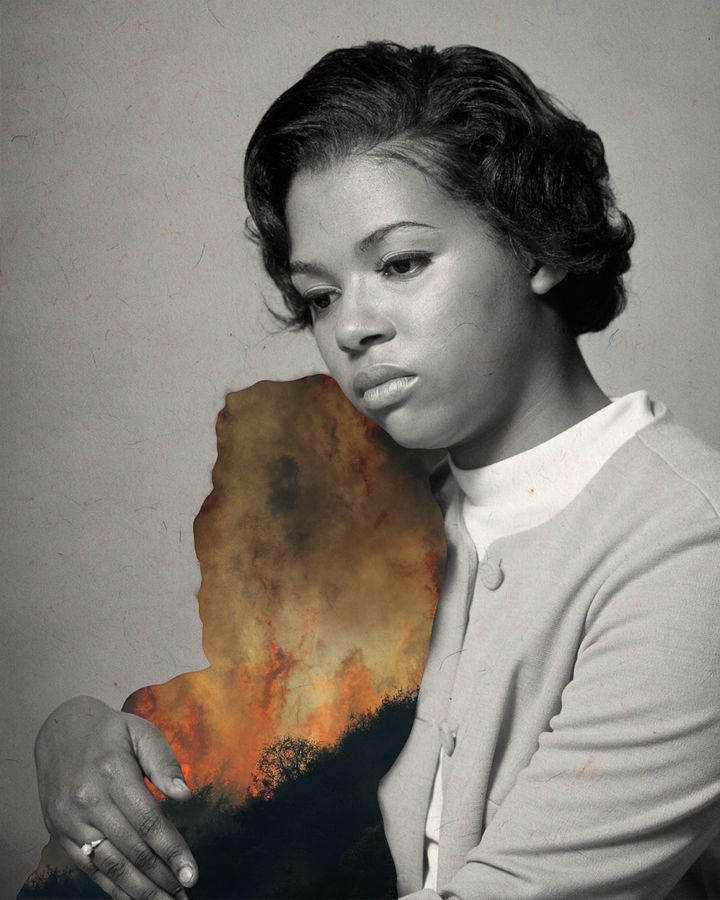
The facts of climate change can be overwhelming, leaving us with feelings of grief, anxiety and anger (Credit: Getty Images)
If we want to connect with the urgency of the crisis and find the motivation and energy to act, we cannot block out our emotions. We need to work through, engage with and process the emotional toll that can overwhelm and paralyse us into inaction. As we argue in our recent paper, while the scale of environmental change we are experiencing might be unprecedented in human history, the feelings of loss, grief and mourning have always been part of the human journey. And there is great value and much-needed encouragement in learning from the ways people have learned to heal and find hope after trauma and devastating losses in the past.
Deep connection
A central theme for healing in My Octopus Teacher is the deep connection with nature and being part of the wild. In his early days as a documentary maker, Foster first witnesses what it's like to be "one" with or "inside" nature by observing the San tribe in the Central Kalahari. He sees that they are amazing trackers who can identify and understand the most subtle signs in the desert landscape – things his own eyes couldn't see – and find hidden animals. He realised his own disconnection and craved this "inside-ness" – to be a part of that world. The octopus provided him with this opportunity, teaching him about the subtleties and intricate synergies of the wild and deepening his connection to it. As Foster reflects, "What she taught me was to feel… that you're part of this place, not a visitor". It is this deep immersion and connection that stimulated his own personal journey of healing.
The teachings of the octopus are not new. We can learn much about this from First Peoples around the globe, who have never seen distinction between us and nature. As Paula Gunn Allen, a Native American poet, activist, scholar and novelist, explains:
"We are the land… that is the fundamental idea embedded in Native American life… the Earth is the mind of the people as we are the mind of the earth. The land is not really the place (separate from ourselves) where we act out the drama of our isolate destinies… It is rather a part of our being, dynamic, significant, real. It is our self… It is not a matter of being 'close to nature'… The Earth is, in a very real sense, the same as our self (or selves)…"
If humanity learned from and embraced this cosmology, we would understand that our wellbeing and healing is dependent on the wellbeing and healing of the Earth and nature, and that we have reciprocal duties and responsibilities to maintain balanced relations with it. Being one with nature, rather than separate to it, helps us to break down the way we currently control and conquer nature, to our own detriment – an approach some have termed "eco-apartheid". Wellness and healing require caring for and balancing the different parts of our "self" – the spirit, body, mind and the Earth.
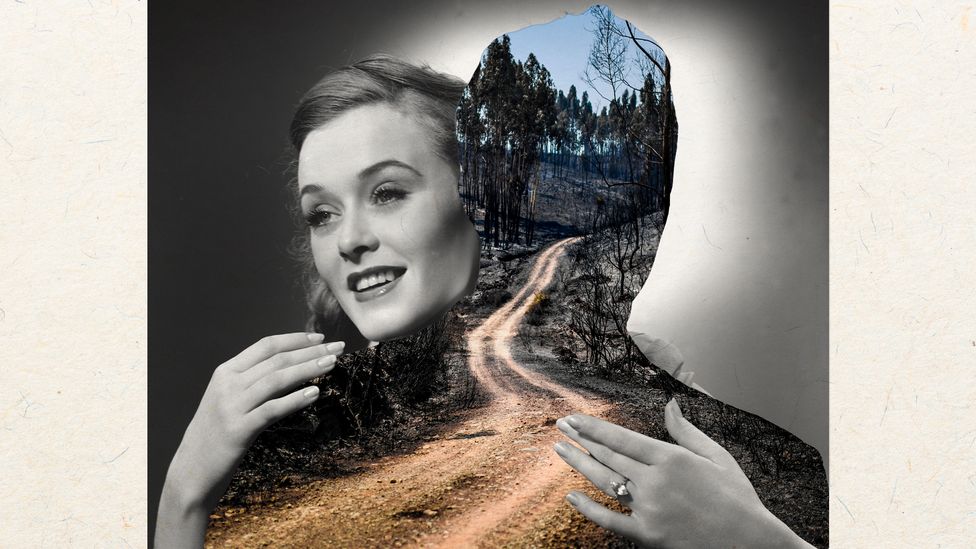
Even as we accept that we are harming nature, finding a sense of "oneness" with it can help us heal (Credit: BBC/Javier Hirschfeld/Getty Images)
This interconnectivity of all things and "oneness" is embedded into the sacred pan-Indian symbol of the medicine wheel, which has been critical for the health and healing of First Peoples in Canada. The First Nations Health Authority in Canada has, for example, used a variation of the medicine wheel for The First Nations Perspective on Health and Wellness tool, which is a visual depiction of their holistic vision for wellness. The medicine wheel links space and time with four sacred directions to represent the cyclical and holistic elements of experience. The four sections are dependent on each other, just as all aspects of life are dependent on each other. What the medicine wheel teaches us is that healing must be holistic – it must occur physically, emotionally, spiritually and socially – but also in balance and in harmony with all other non-human things.
If humanity can embody this oneness with nature, and understand our reciprocal duties and responsibilities, we might be better able to move beyond what Jennifer Marlon, a climate researcher at Yale University, has called "false hope" – that is, that God or nature (as distinct from us) will make the problem go away without any action from us. What we need instead is "constructive hope". We must believe that we have the agency to change the world and curb climate change. This determination and hope could come from understanding our interconnectedness with, and our duties to, nature and ourselves. (Read more about false and constructive hope)
Along similar lines, Helen Cox from Deakin University and Colin Holmes from the University of Western Sydney similarly emphasised the importance of place when examining the healing experiences of those affected by the 1983 Ash Wednesday fire. People shared their deep joys in watching their surroundings recover. Their emotional healing was connected to the healing of the local environment and the cycle of decay and regeneration.
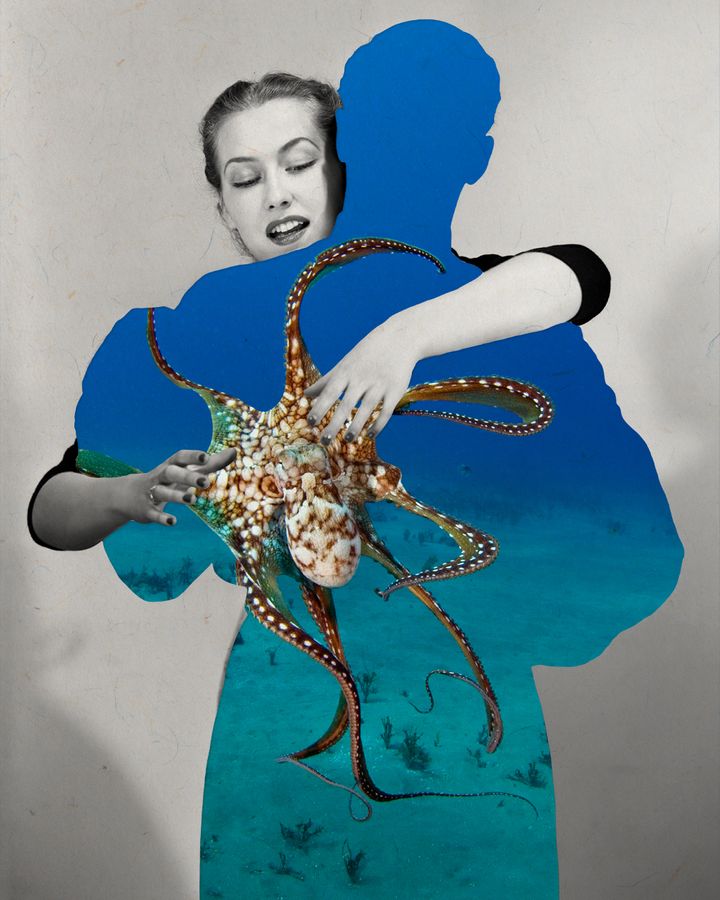
Finding a meaningful connection with an animal helps some to heal their sense of isolation from the natural world (Credit: BBC/Javier Hirschfeld/Getty Images)
Panu Pihkala, who researches eco-anxiety and climate grief at the University of Helsinki, has similarly reflected on "winter joy" and "snow relief", where people feel exceptionally joyful and relieved from the arrival of snow during these times of changing winters. Perhaps in the resilience of our surroundings, and natural processes of decay and regeneration, we can find healing, empowerment and constructive hope. (Read more from Pihkala on the way we grieve a changing climate)
Stillness and contemplation
First Peoples in Australia offer us another gift for healing: "Dadirri", which is inner, deep listening and quiet, still awareness – similar to contemplation. Judy Atkinson, a Bundajung woman whose vocation has been spent exploring transgenerational trauma and healing, articulates Dadirri in the following way:
"Dadirri listens and knows, witnesses, feels, empathises in the pain under the anger, and, if the anger is accompanied by action, seeks to understand the thoughts and feelings behind the action. Dadirri then seeks to find the source of that pain in knowledge-building for a deepening understanding of the more complete story of the person. Dadirri is the stillness and contemplation, in the confusion of chaos as actions of violence are witnessed. Dadirri can also be, however, the chaos of feelings and actions as pain-anger-grief is articulated in processes of relating to the group which is in stillness and listening."
Listening, contemplation and sharing are important tools for healing in the Anthropocene. They may help us to truly engage with our anxieties, grief and anger, and see them as having transformational potential. While Foster did not articulate Dadirri, nor are we to assume he had heard of the concept, his journey suggests that stillness and contemplation in a tangled underwater terrain were central for him to work through his pain in communion with the octopus.
Slow healing
It is not only important to consider how and what you can engage with to heal, but also how long you may take. Kasia Mika from Queen Mary University and Ilan Kelman from University College London, who have researched various topics related to environmental disasters and crisis, offer slow healing – also known as "shealing" – as an insight.
Shealing refers to slow, ongoing, individual and collective efforts to assemble life and livelihoods in post-disaster contexts. Shealing emphasises that healing is a gradual process, sometimes lasting generations, which First Peoples also recognise. It accounts for the complex, asynchronous, non-linear and open-ended character of recovering from a disaster.
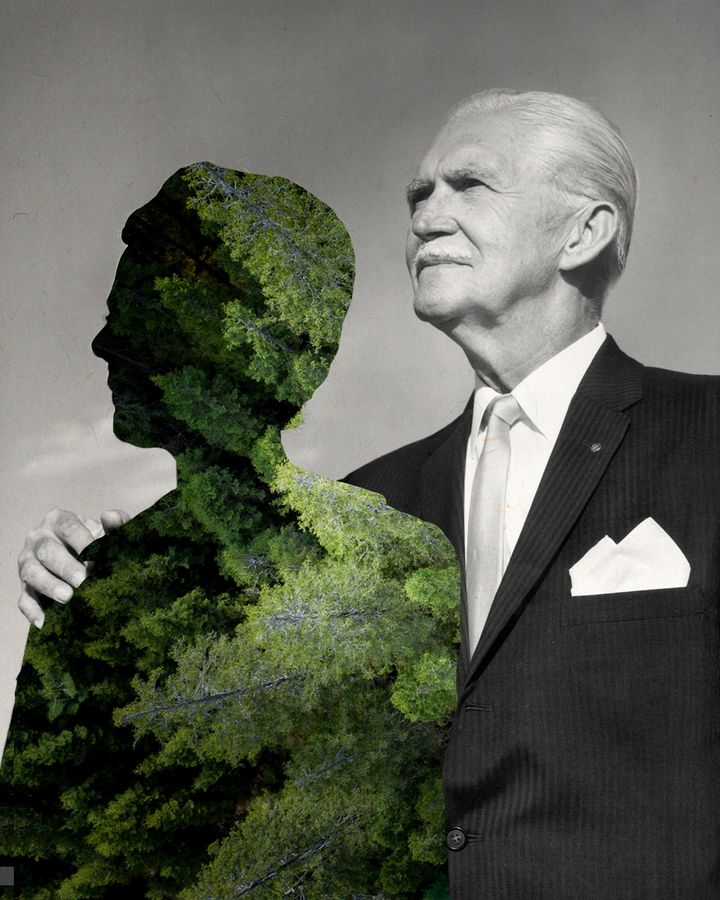
The concept of "shealing" recognises that recovery from the trauma of climate change is not likely to be a quick process (Credit: BBC/Javier Hirschfeld/Getty Images)
The process of shealing requires resisting assumptions that early and fast recoveries are the most appropriate or effective. In a time like today where we face destruction and loss from climate change and disasters, we need to "stay with the ruins" and take our time to memorialise and come to terms with the loss. This can be translated to the emotional toll of the Anthropocene. We must not block out our emotions. We must take our time to accept our anxiety, fear and denial, and come to terms with them, rather than sweeping them away.
This might seem counterintuitive, as in this age of unprecedented and accelerating climate change, we don't have the time to "take our time". We need to act with urgency. But shealing teaches us that taking one's time does not imply passivity. Shealing is a verb, implying ongoing action and continuity. In the Anthropocene, we must participate in ongoing healing, where fear, anxiety but also hope and action can all co-exist. Having something to do to solve a problem can, after all, help the healing process by moving people from hopelessness to a sense of empowerment.
Shealing also encapsulates a healing process that does not have a perfect end-point in sight. It instead focuses on the daily effort of living on and bringing meaning to one's life. It is a continuous and open-ended process in the present, not focused on a defined endpoint or recovery of some pre-disaster state. This is critical in the Anthropocene. We cannot overestimate society's power of bringing about a happy ending. We need healthy skepticism. Per Espen Stoknes, a Norwegian psychologist, has argued that we cannot base our hope in expectations of a happy ending as we do not have control of that outcome. Shealing may help us focus on finding hope and healing in an open-ended process.
Social healing
Peace studies offer us hope that we can experience what Foster experienced even without the luxuries that his privilege enabled – that is, being a comparatively wealthy white male with time and access to undisturbed nature. We cannot all connect with nature at such a deep level, nor can we all go on a journey of healing in communion with a different species. Thankfully, peace and disaster studies have, however, emphasised collective and social healing – that is, healing together as people and community. Disruption, after all, connects us.
While healing can be felt as an emotional outcome for an individual, it is often triggered or mediated by social processes. Some Holocaust survivors for example, bypassed therapy as they viewed it as an admission of being harmed by their experience. Instead, many found healing and hope through engaging in community activities. This included informal peer networks, rituals of remembrance, gatherings of survivors, creating testimony archives, and collectively planting trees as symbols of life and rebirth.
Similarly, Sri Lankan civil war survivors recovered their confidence, motivation, capacity and skills after their family and community regained function. This meant that what was needed to heal was the re-establishment of community processes, traditional practices, traditional rituals and ceremonies, community resources and relationships.
In the environmental disaster context, intercultural collaborations have also proved important. For example, children facing environmental disasters in Haiti, Japan and America engaged in music and the exchange of items with messages of care. This gave them a sense of hope that we live in a global community where people care about each other.
Likewise, in the face of severe drought in rural Australia, yarning workshops – which are dialogue circles that are an important process within Aboriginal and Torres Strait Islander culture – between First Peoples and others created unity, vision and clarity, becoming a meaningful expression of partnership that was emotionally and socially healing for all. Indigenous ancient rituals and approaches to healing can be transformative for the healing of Indigenous and non-Indigenous people and can bring about a sense of reconciliation between groups.
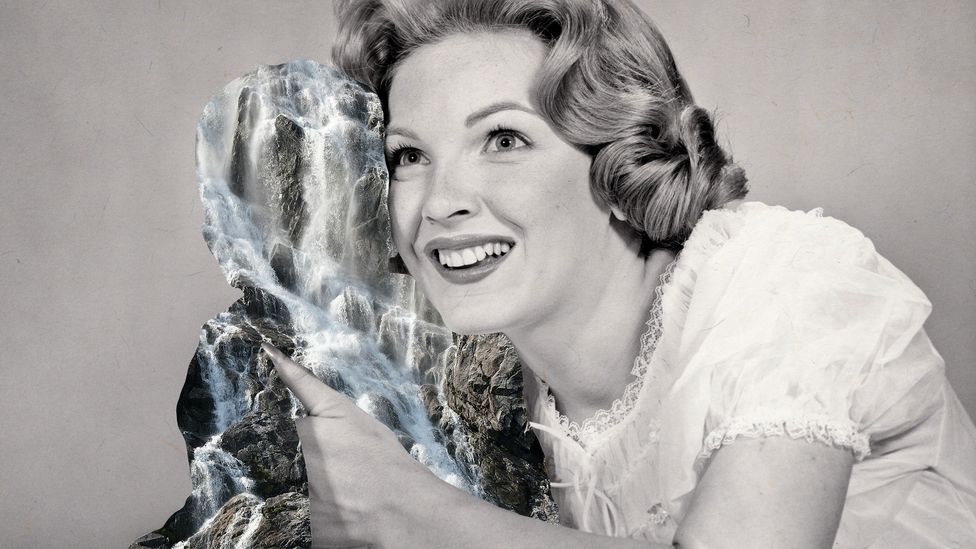
Finding a sense of community amid climate trauma can help people rediscover a constructive kind of hope (Credit: BBC/Javier Hirschfeld/Getty Images)
These connections on familial to global scales help people heal by creating unity and ensuring that they do not feel alone. This theme of deep connection with another for healing was experienced by Foster with the octopus. He explains how he felt parallels between the octopus' life and his own: they both faced adversity and slowly recovered, together. They were both vulnerable in different ways, and yet both surviving. He speaks about a sense of reciprocity, where he felt that both the octopus and himself were gaining from their unlikely relationship.
Social healing can also contribute to "responsive hope", which is a concept introduced by Vitoria McGeer, a Princeton philosopher, to highlight how we need to energise and empower others in order to empower ourselves.
A path forward
When the interconnected equilibrium of life is dislodged, the consequences can be so frightening, anxiety-inducing and overwhelming that, in order to cope, we can become stuck, be in denial and shed our responsibilities. But we need to engage with and work through these emotions so that we can see their transformative potential, and so that we stay energised and capable.
Drawing on the wisdom of First Nations people, we must learn to heal holistically and in balance with the Earth system. The reality of the Anthropocene should force us to see our place in nature – we are it. We must contemplate and take our time to heal, understanding that it can be a complex and non-linear process.
The experiences of Foster, and numerous others across the globe who have endured disasters and traumas, also show us that we must heal in communion, whether it is with nature or each other as a community.
Although what we are experiencing is unprecedented in human history, there is much value, inspiration and learnings from humanity’s stories of healing in the past. Let's continue to learn from survivors and take the learnings with us as we carve a more hopeful path onwards.
--
Rachel Clissold is a researcher at the University of Queensland interested in exploring interactions between humans and the environment, Ross Westoby is a critical social scientist with an international relations background at Griffith University, and Karen E McNamara is a development geographer at the University of Queensland.
--
Climate Emotions
Climate change is harming the planet, and it is harming mental health too. From fear and anxiety to hope and healing, BBC Future's Climate Emotions series examines our complex responses to climate change, and how those responses will shape our ability to deal with the environmental challenge we face.
--
Join one million Future fans by liking us on Facebook, or follow us on Twitter or Instagram.
If you liked this story, sign up for the weekly bbc.com features newsletter, called "The Essential List". A handpicked selection of stories from BBC Future, Culture, Worklife, and Travel, delivered to your inbox every Friday.

